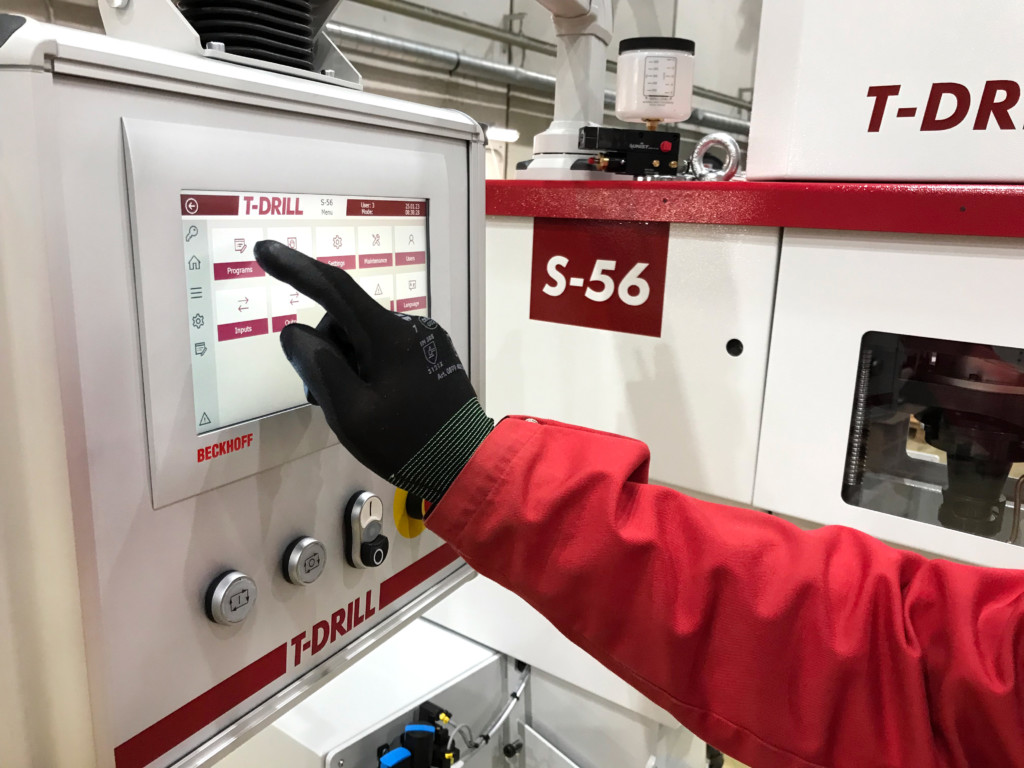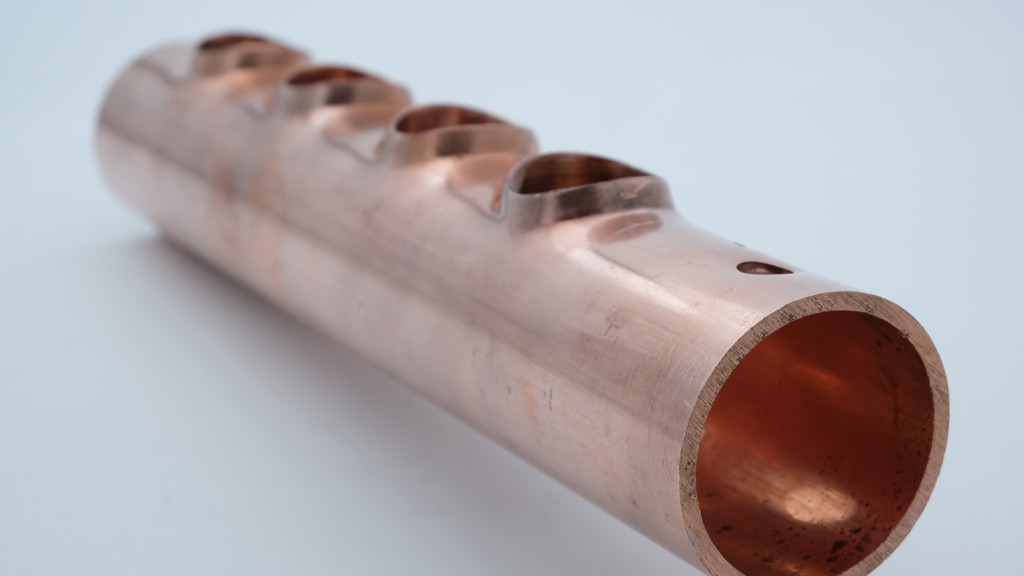
T-DRILL systems have been used for producing tubular components for the HVACR field for decades. Between 2010 and 2022, 72 % of T-DRILL’s S-54 and S-56 collaring machines and 68 % of T-DRILL spinners were delivered to the HVACR industry. In the US alone, there are currently over 200 T-DRILL machines in active use in HVACR.
The reason for the T-DRILL collaring method’s popularity in HVACR, as well as other applications, is that the method requires no expensive T-pieces – the tee is formed from the basic tube which significantly lowers the amount of pipe pieces and brazed or soldered joints. The process is much faster and simpler, which cuts down costs. The T-DRILL method also produces a more reliable, durable joint.
HVACR is currently going through a shift. As global warming increases, the use of synthetic refrigerants such as hydrofluorocarbons is increasingly restricted. HFCs are powerful greenhouse gases that are mainly used by the refrigeration and air conditioning industry. By 2036, the production and imports of HFCs will be phased down by 85 % in developed countries.
One of the alternatives for HFCs is carbon dioxide, which a natural refrigerant with low environmental impact. The challenge of using CO2 is its high operating pressure. The pressure that CO2 requires in HVACR applications is lethal. High amounts of pressure in the tubes puts even more emphasis on the durability of the system’s joints. Since The T-DRILL method results in a more reliable, durable joint, it will continue to produce the safest tube assemblies for the HVACR industry as the use of CO2 increases. The T-DRILL method has received a UL approval to be used in the field.

CO2 also requires special properties from the materials used in the refrigeration systems. Typically, tubular components in HVACR applications are made of copper, which is a corrosion-resistant, relatively durable and lightweight material that is easy to work with. However, copper alone cannot withstand the pressure required by CO2. A more durable material on the market is copper-iron, 98 % copper, 2 % iron. Copper-iron is much more durable than copper and also 2–3 times thicker.
Stainless steel has sometimes been advocated as an alternative for copper-iron. However, copper-iron has an undisputable advantage: it can be brazed. Brazing is simpler and faster than TIG welding, which means that it is also less costly. Brazing cuts down on man hours and eliminates the need to constantly train certified welders. In Europe, systems containing CO2 are already classified as pressure vessels. This means that there will be even more regulations regarding welding tubular systems in for HVACR applications.
T-DRILL Preparing to Introduce a Solution for Copper-Iron Tubular Systems
According to Carroll Stokes, Technical Sales at T-DRILL, T-DRILL has been preparing to handle copper-iron for years. The company has successfully delivered smaller copper-iron refrigeration systems and is currently doing extensive testing and preparing to introduce a solution for larger systems.
– We are currently developing tools and equipment with the ability to pull collars and spin-form tube ends that are made out of copper-iron. We have known that these changes will take place and have been preparing for it for a while. We are looking forward to continuing working together with our customers to keep providing them with the cost-effective, time-saving solutions we always have.
Read more about T-DRILL solutions for HVACR applications
Share on social media